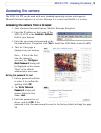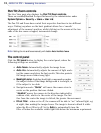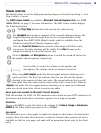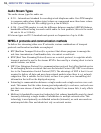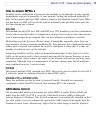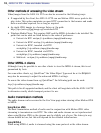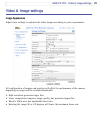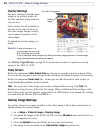
16
AXIS 214 PTZ - Video and Audio Streams
Audio Stream Types
The audio stream types for audio are:
• G.711 - International standard for encoding wired-telephone audio. Uses PCM samples
to compress audio where higher signal values are compressed more than lower values.
In Axis products, this sets the coding type to μ-law 64 kbit/s.
• G.726 - Uses PCM samples to code the difference between samples (ADPCM). Reduces
bandwidth without losing too much useful audio. In Axis products, this sets the coded
bit rate to 24 or 32 kbit/s.
All stream types are ITU-T standards and operate on frequencies of up to 4 kHz.
MPEG-4 protocols and communication methods
To deliver live streaming video over IP networks, various combinations of transport
protocols and broadcast methods are employed.
• RTP (Realtime Transport Protocol) is a protocol that allows programs to manage the
real-time transmission of multimedia data, via unicast or multicast.
• RTSP (Real Time Streaming Protocol) serves as a control protocol, to negotiate which
transport protocol to use for the stream. RTSP is thus used by a viewing client to start a
unicast session, see below.
• UDP (User Datagram Protocol) is a communications protocol that offers limited service
for exchanging data in a network that uses the Internet Protocol (IP). UDP is an alterna
-
tive to the Transmission Control Protocol (TCP). The advantage of UDP is that it is not
required to deliver all data and may drop network packets when there is e.g. network
congestion. This is suitable for live video, as there is no point in re-transmitting old
information that will not be displayed anyway.
• Unicasting is communication between a single sender and a single receiver over a net-
work. This means that the video stream goes independently to each user, and each user
gets their own stream. A benefit of unicasting is that if one stream fails, it only affects
one user.
• Multicast is bandwidth-conserving technology that reduces bandwidth usage by simul-
taneously delivering a single stream of information to multiple network users. This
technology is used primarily on delimited networks (intranets), as each user needs an
uninterrupted data flow and should not rely on network routers.




